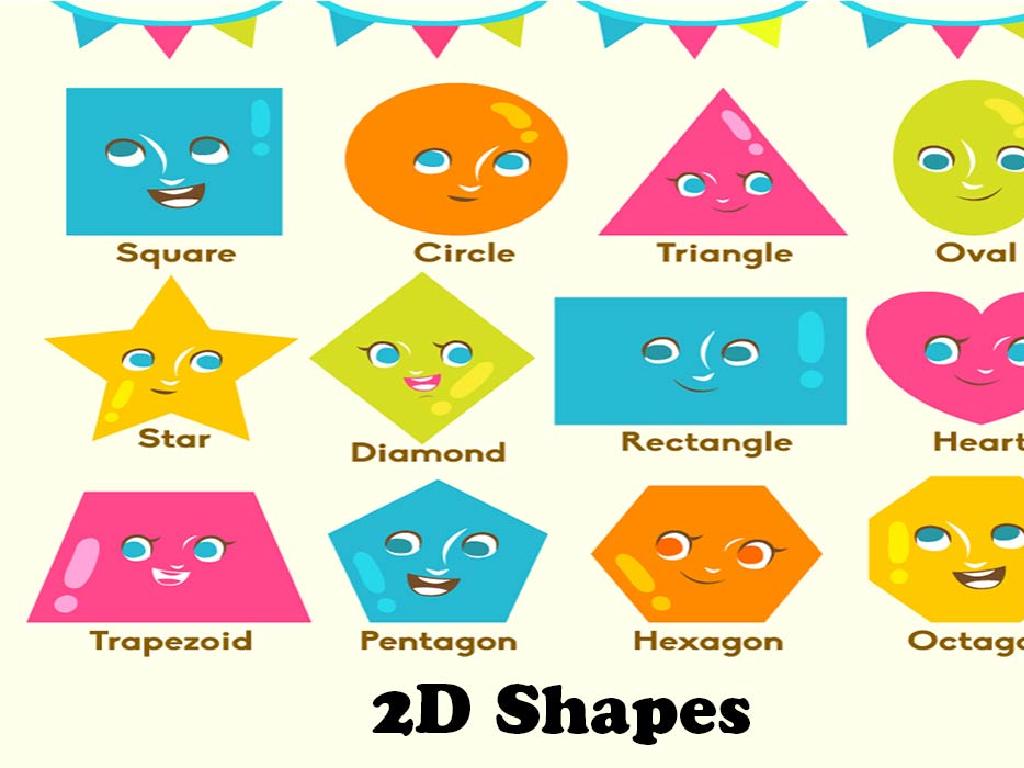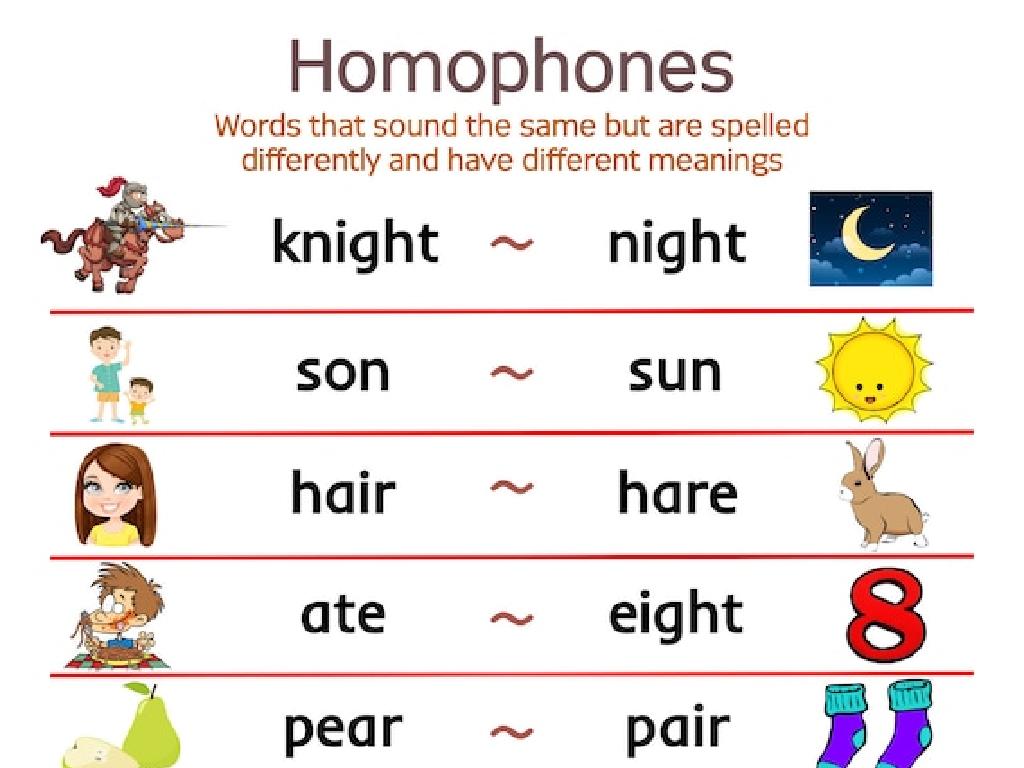Region Profile: South America
Subject: Social studies
Grade: Sixth grade
Topic: The Americas: Society And Environment
Please LOG IN to download the presentation. Access is available to registered users only.
View More Content
Welcome to South America!
– Discover South America’s diversity
– A continent rich in cultures, languages, and ecosystems.
– Today’s lesson and objectives
– South America: the fourth largest
– It’s smaller than Asia, Africa, and North America.
– Engage with fun geographical facts
– Home to the Amazon River and the Andes Mountains.
|
Begin the class with a warm welcome to the exciting continent of South America, emphasizing its vast diversity in cultures, languages, and natural landscapes. Outline the learning objectives for the day, which may include understanding the geography, history, and societies of South America. Highlight the fun fact that South America is the fourth largest continent to spark interest and provide a geographical context. This fact can lead into a discussion about the continent’s significant features such as the Amazon River, the world’s largest by volume, and the Andes, the longest mountain range. Use this slide to set the stage for a deeper exploration of South America’s unique environmental and societal characteristics.
Exploring South America’s Physical Geography
– Discover the Andes, Amazon, and Atacama
– Andes: longest continental mountain range, Amazon: largest rainforest, Atacama: driest desert
– Learn about diverse climate zones
– Tropical: near the Equator, Temperate: mid-latitudes, Alpine: high elevations
– Map activity: Find key geographical features
– Use a map to locate the Andes, Amazon River, and Atacama Desert
– Discuss how geography shapes society
|
This slide introduces students to the varied physical geography of South America, which includes the Andes Mountains, the Amazon River, and the Atacama Desert. Discuss the significance of each feature, such as the Andes being the longest continental mountain range, the Amazon as the largest rainforest, and the Atacama as the driest desert. Explain the different climate zones: Tropical climates are typically hot and humid, Temperate zones have moderate weather, and Alpine climates are found in high mountain areas and are colder. For the activity, provide students with maps and ask them to locate these major physical features. This exercise will help them understand the geographical diversity of the continent and its impact on the environment and society. Prepare to assist students in identifying the features and to discuss how these geographical elements influence the culture, economy, and daily life in South America.
Cultural Diversity in South America
– South America’s linguistic variety
– Predominantly Spanish and Portuguese, plus many indigenous languages.
– Celebrating festivals and traditions
– Examples: Brazil’s Carnival, Peru’s Inti Raymi.
– Culture’s impact on regional identity
– How traditions, beliefs, and languages influence a society’s character.
– Engage in cultural identity discussion
|
This slide aims to introduce students to the rich cultural diversity of South America, highlighting the variety of languages spoken across the continent, including Spanish, Portuguese, and numerous indigenous languages. It also touches on the vibrant festivals and traditions that are integral to South American societies, such as the world-famous Carnival in Brazil and the traditional Inca festival of Inti Raymi in Peru. The discussion point encourages students to think about and articulate how these cultural elements contribute to shaping the unique identity of a region. This will help students understand the importance of culture in defining a society and foster appreciation for cultural diversity.
Historical Highlights of South America
– The Inca Empire’s legacy
– Advanced civilization with significant influence on culture, language, and architecture.
– European colonization impact
– European conquests brought changes in governance, culture, and demographics.
– Independence movements
– Led to the creation of new nations and the end of colonial rule.
– Heroes: Bolivar & San Martin
– Key figures in South American independence who fought against Spanish rule.
|
This slide aims to give students a brief overview of the pivotal historical events that shaped South America. The Inca Empire was a highly developed society that left a lasting impact on the continent. European colonization introduced new cultures and governance but also led to exploitation and conflict. The independence movements were crucial in establishing the nations we know today, with Simon Bolivar and Jose de San Martin being central figures in the fight for freedom. Encourage students to explore these topics further by researching the Inca Empire’s achievements, the effects of colonization, and the stories of the independence heroes.
Modern South America: Economy and Environment
– Agriculture: A key economic activity
– Crops like soybeans, coffee, and sugarcane are vital.
– Mining: Rich in natural resources
– Countries like Brazil and Chile are leading miners of iron, copper, and gold.
– Tourism: Exploring diverse landscapes
– Tourists visit the Andes, Patagonia, and ancient ruins like Machu Picchu.
– Addressing environmental challenges
– Efforts to combat deforestation and promote conservation, especially in the Amazon.
|
This slide provides an overview of the economic activities and environmental challenges in modern South America. Emphasize the importance of agriculture, mining, and tourism as key economic drivers, and discuss how these activities contribute to the region’s GDP and employment. Highlight the environmental issues, particularly deforestation, which threatens biodiversity and indigenous communities. Use the Amazon Rainforest as a case study to illustrate both the economic benefits of resource extraction and the critical need for conservation efforts to protect this vital ecosystem. Encourage students to think about the balance between economic development and environmental sustainability.
South America Today: Society and Economy
– Population spread and cities
– Most people live along coasts or rivers in cities like São Paulo and Bogotá.
– Role in the global economy
– Exports include soybeans, oil, and minerals, impacting global trade.
– Current events and news
– Discuss recent news articles about South America.
– Understanding recent developments
|
This slide aims to give students a snapshot of contemporary South America, focusing on how people are distributed across the continent and the trend towards urbanization, with many living in large cities that are hubs of culture and economy. Highlight South America’s contributions to the global economy, particularly in agriculture and natural resources. Encourage students to stay informed about current events by looking at recent news, which will help them understand the continent’s role in global affairs. Discuss how these elements are interconnected and influence the daily lives of South Americans. For a more interactive class, consider having students bring in a news article they found interesting and discuss it with the class.
Class Activity: Create Your Country in South America
– Imagine founding a new country
– Choose a location and design a flag
– Decide on your country’s key features
– Consider geography, resources, language, and government type
– Prepare a presentation on your country
– Focus on geography, culture, and economy for your presentation
|
This activity encourages students to apply their knowledge of South American geography, culture, and economics creatively. Students will choose a location within South America to establish their country, considering geographical advantages or challenges. They will design a flag that represents their country’s values or characteristics. When deciding on key features, students should think about the type of government, official language, and natural resources. For the presentation, students should describe their country’s geographical location, cultural aspects such as holidays, food, and traditions, and economic factors like industries or trade. This activity will help students understand the diversity and complexity of nation-building. Provide guidance on research methods and presentation skills. Offer examples of unique country features to inspire their creativity.






